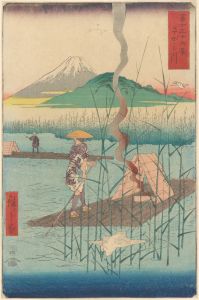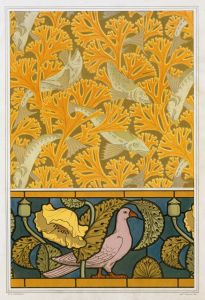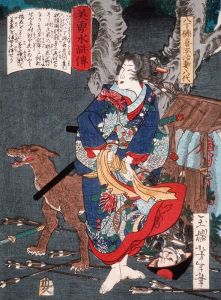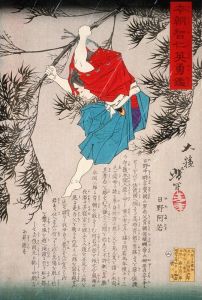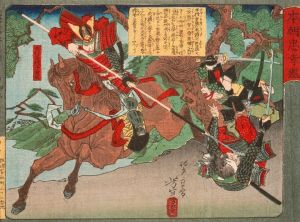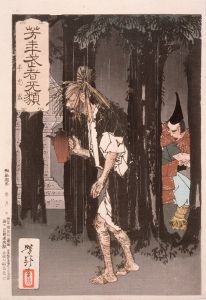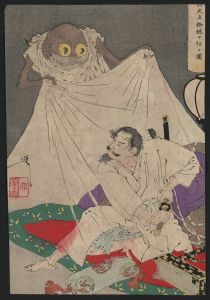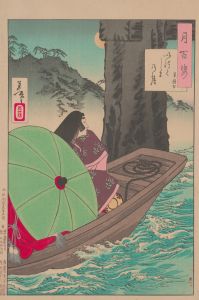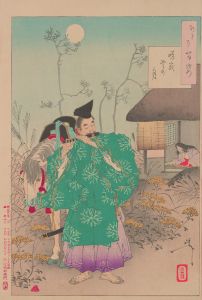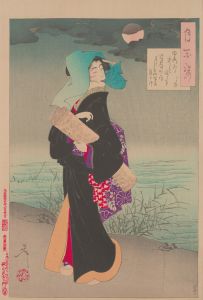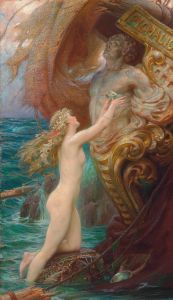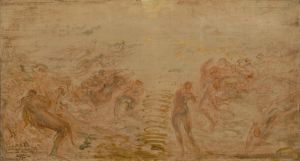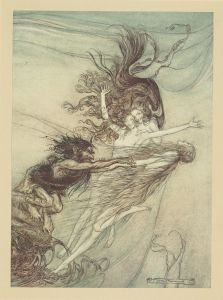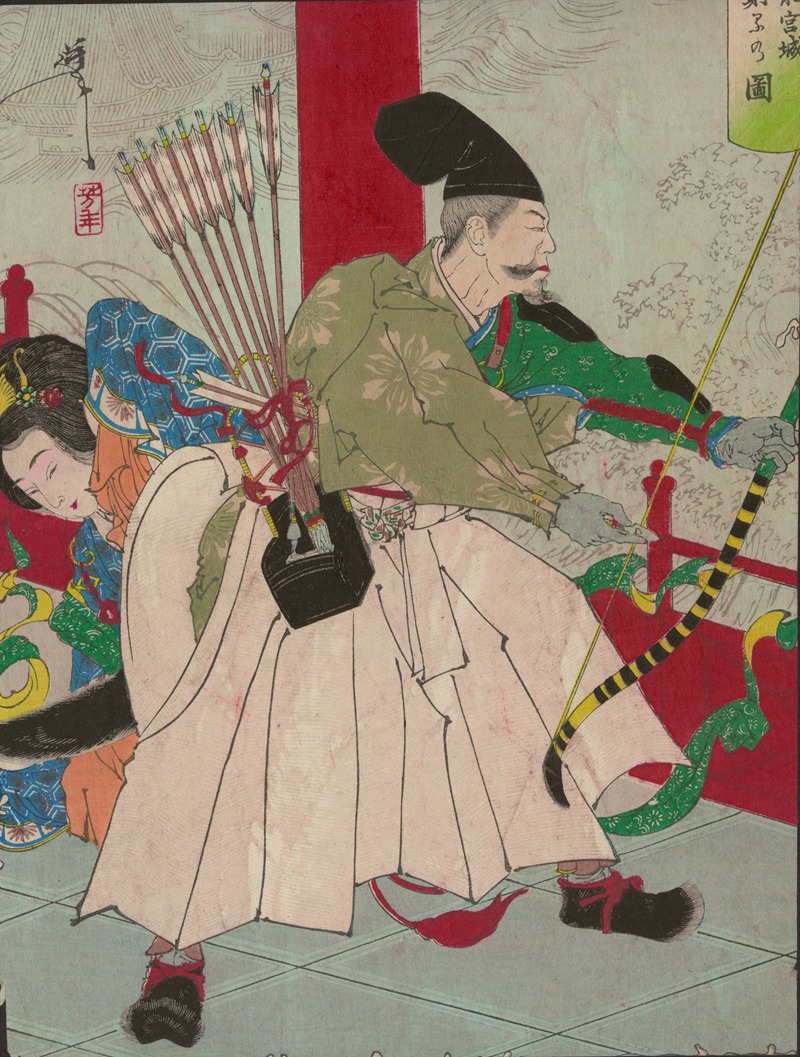
Ryūgūjō
A hand-painted replica of Tsukioka Yoshitoshi’s masterpiece Ryūgūjō, meticulously crafted by professional artists to capture the true essence of the original. Each piece is created with museum-quality canvas and rare mineral pigments, carefully painted by experienced artists with delicate brushstrokes and rich, layered colors to perfectly recreate the texture of the original artwork. Unlike machine-printed reproductions, this hand-painted version brings the painting to life, infused with the artist’s emotions and skill in every stroke. Whether for personal collection or home decoration, it instantly elevates the artistic atmosphere of any space.
Tsukioka Yoshitoshi (1839–1892) was a prominent Japanese artist known for his work in the ukiyo-e genre, a style of woodblock printing that flourished during the Edo period. One of his notable works is "Ryūgūjō," which is part of his series "One Hundred Aspects of the Moon" (Tsuki hyakushi), created between 1885 and 1892. This series is celebrated for its innovative use of traditional themes and its exploration of the relationship between humans and the moon, a common motif in Japanese art and literature.
"Ryūgūjō" refers to the Dragon Palace, an underwater palace in Japanese folklore, often associated with the legend of Urashima Tarō. In this story, Urashima Tarō is a fisherman who rescues a turtle and is rewarded with a visit to the Dragon Palace, where he spends what feels like a few days. Upon returning to his village, he discovers that many years have passed. This tale is a classic example of the Japanese theme of time distortion and the transient nature of life.
Yoshitoshi's depiction of "Ryūgūjō" captures the ethereal and otherworldly atmosphere of the Dragon Palace. His work is characterized by its vivid colors, intricate details, and dynamic compositions, which are hallmarks of his later style. Yoshitoshi was known for his ability to blend traditional Japanese aesthetics with Western influences, which he incorporated into his work during a time of significant cultural change in Japan.
The "One Hundred Aspects of the Moon" series, including "Ryūgūjō," reflects Yoshitoshi's interest in historical and mythical subjects, as well as his fascination with the supernatural. Each print in the series features a scene illuminated by the moon, creating a sense of mystery and highlighting the emotional depth of the characters depicted. Yoshitoshi's work often explores themes of beauty, violence, and the supernatural, and he is credited with revitalizing the ukiyo-e tradition during a period when it was in decline.
Yoshitoshi's "Ryūgūjō" is a testament to his skill as an artist and his ability to convey complex narratives through visual art. His work remains influential and is celebrated for its contribution to the preservation and evolution of Japanese woodblock printing. Today, Yoshitoshi is regarded as one of the last great masters of ukiyo-e, and his prints continue to be studied and admired for their artistic and cultural significance.
In summary, Tsukioka Yoshitoshi's "Ryūgūjō" is a notable example of his work in the "One Hundred Aspects of the Moon" series, showcasing his mastery of the ukiyo-e style and his ability to blend traditional Japanese themes with innovative artistic techniques. The print captures the enchanting allure of the Dragon Palace, reflecting Yoshitoshi's interest in folklore and the supernatural, and stands as a significant piece in the history of Japanese art.





